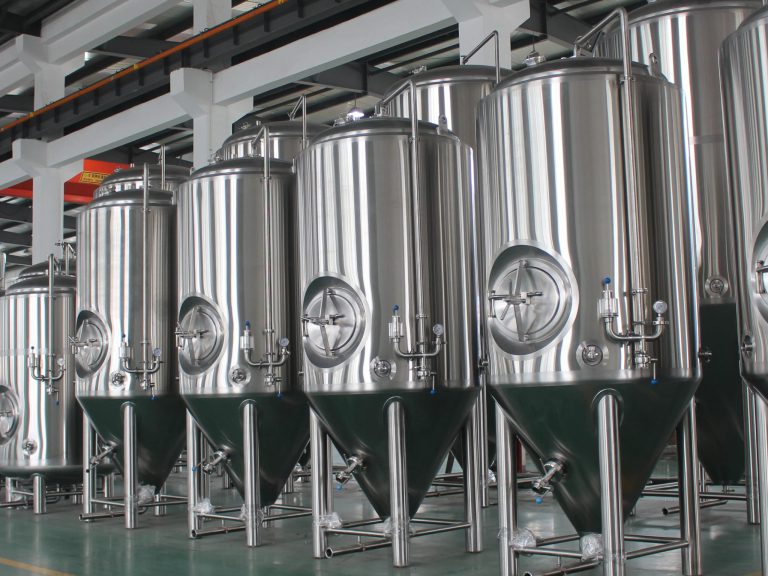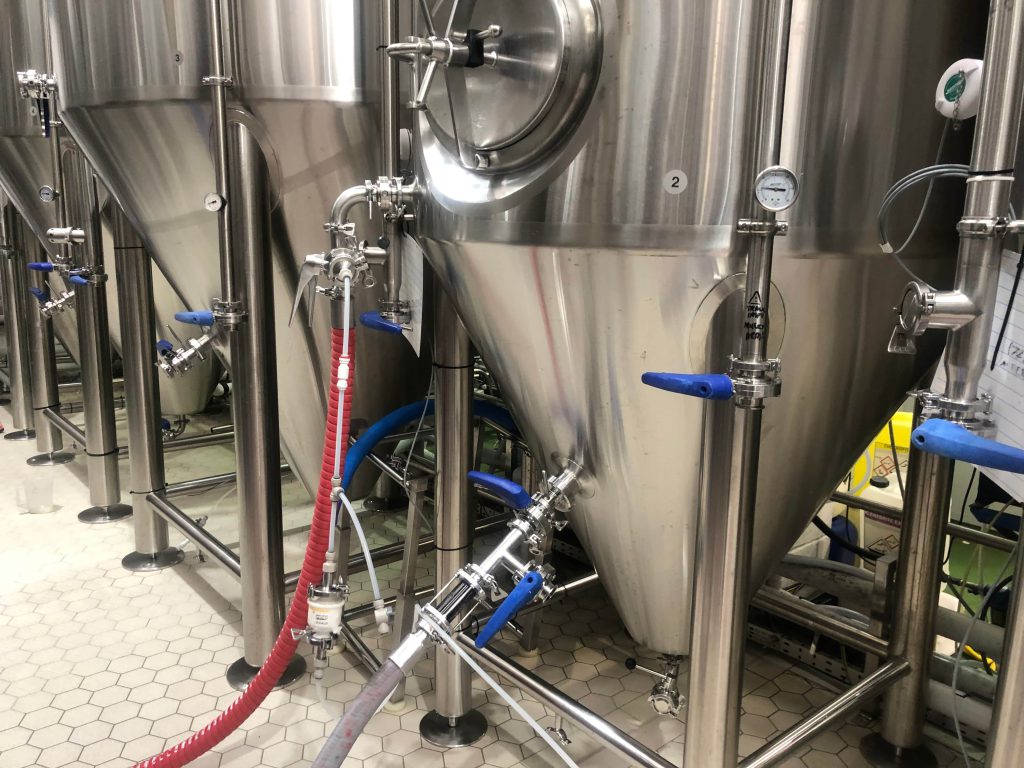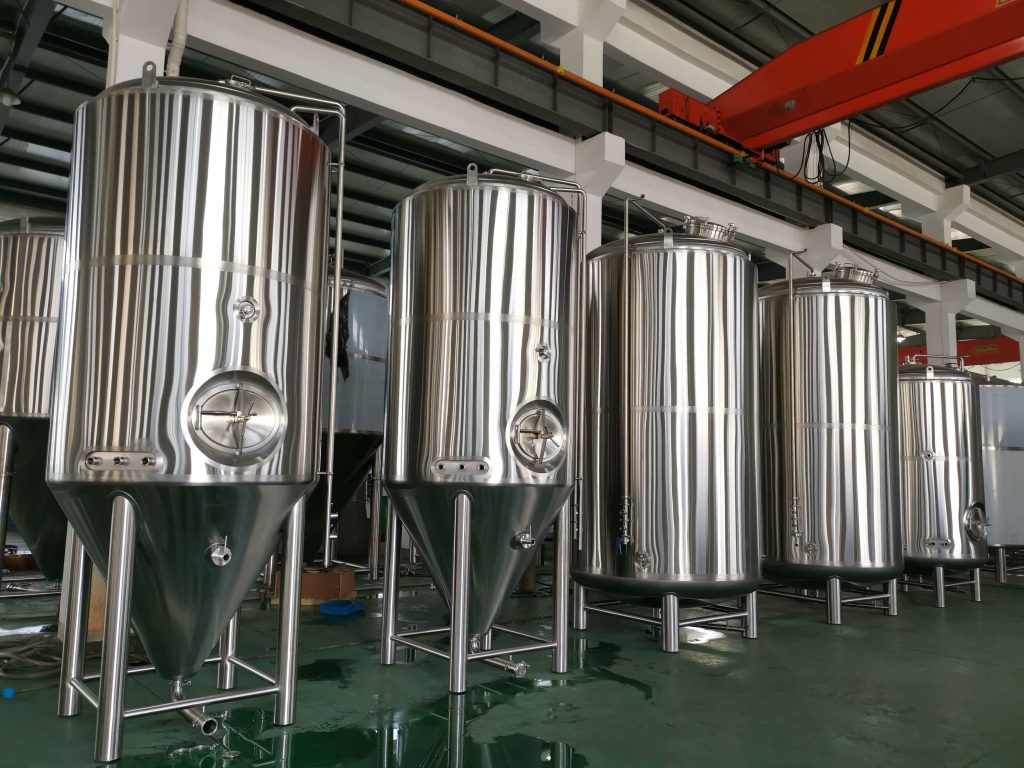Einführung

Craft beer production is a meticulous process that relies heavily on specialized equipment, with brewing vats playing a pivotal role in every stage. These vats are not mere containers but sophisticated vessels designed to facilitate key stages of brewing, from mashing to fermentation. Understanding their design, function, and types is essential for brewers aiming to perfect their craft and produce high-quality beer consistently.
Die Grundlagen von Brewing Vats
Brewing vats are large vessels used in breweries to mix, heat, and ferment ingredients such as malt, hops, water, and yeast. They come in various sizes and shapes, each serving specific purposes in the brewing process. The primary types of brewing vats include mash tuns, lauter tuns, brew kettles, fermenters, and conditioning tanks. Each type is crucial at different stages of brewing, ensuring efficiency and maintaining the desired quality of the final product.
Arten von Brewing Vats
- Maischbottiche: These vats are designed for the mashing process, where crushed malt is mixed with hot water to convert starches into fermentable sugars. Mash tuns can vary in size from smaller units suitable for small breweries to larger vessels for industrial-scale production. Materials like stainless steel are favored for their durability and resistance to corrosion, crucial for withstanding repeated use and cleaning cycles.
- Läuterbottiche: Once mashing is complete, the resulting mixture (wort) needs to be separated from the spent grain. Lauter tuns perform this crucial step by allowing the liquid wort to drain away from the solid grain husks. This separation process is essential for extracting the sugars and flavors from the malt without introducing unwanted bitterness or astringency to the final beer.
- Braukessel: Also known as boiling kettles, these vats are where the wort is boiled with hops and sometimes other adjuncts. This boiling process serves multiple purposes: sterilizing the wort, extracting hop flavors and bitterness, and concentrating the sugars for fermentation. Brew kettles are often made from copper or stainless steel to ensure efficient heat transfer and ease of cleaning.
- Fermenter: After boiling, the wort is cooled and transferred to fermenters where yeast is added to begin the fermentation process. Fermenters can range in size from small cylindrical vessels used by craft brewers to massive tanks in commercial breweries. Temperature control and sanitation are critical during fermentation to ensure yeast activity produces the desired alcohol content and flavors.
- Konditionierungstanks: Once fermentation is complete, beer may undergo conditioning where it matures and undergoes carbonation. Conditioning tanks allow brewers to control temperature and pressure to achieve specific flavor profiles and carbonation levels before the beer is finally packaged and distributed.
Überlegungen zum Entwurf
The design of brewing vats directly impacts the quality and consistency of the beer produced. Factors such as heat distribution, efficiency of mixing, and control over fermentation conditions are crucial considerations in vat design. For example, stainless steel is preferred for its non-reactive properties, easy cleaning, and longevity. Some advanced designs incorporate jacketed walls for precise temperature control, automated agitation systems for uniform mixing, and pressure-rated features for handling carbonation during conditioning.
Key Functions of Brewing Vats
Brewing vats serve several critical functions throughout the brewing process:
- Maischen: Converting starches into fermentable sugars through enzymatic action at controlled temperatures.
- Kochen: Sterilizing the wort, extracting hop flavors, and concentrating sugars.
- Fermentation: Allowing yeast to convert sugars into alcohol and carbon dioxide, creating the foundation of beer’s flavor and character.
- Konditionierung: Maturing the beer, enhancing flavors, and achieving desired carbonation levels before packaging.
Role in Quality Control
Maintaining precise control over brewing vats is essential for ensuring consistent beer quality. Modern breweries employ automated monitoring and control systems that regulate temperature, pressure, and agitation during critical stages like mashing, boiling, and fermentation. These systems not only enhance efficiency but also minimize variations between batches, ensuring that each beer meets the brewery’s standards and customer expectations.
Umweltauswirkungen und Nachhaltigkeit
The brewing industry has increasingly focused on sustainability, with brewing vats playing a role in reducing environmental impact. Innovations include energy-efficient heating systems, water-saving technologies such as closed-loop cooling systems, and materials that minimize resource consumption over the vat’s lifecycle. By implementing these practices, breweries can reduce their carbon footprint while maintaining operational efficiency.
Innovations in Brewing Vats
Advancements in brewing technology continue to drive innovation in vat design and functionality. Modern vats are equipped with advanced features such as programmable logic controllers (PLCs) for precise automation, integrated sensors for real-time monitoring of pH, temperature, and fermentation progress, and modular designs that allow for scalability and customization. These innovations enable brewers to experiment with new recipes, maintain consistency, and adapt to changing consumer preferences in the dynamic craft beer market.
Comparison of Different Types of Brewing Vats
| Vat Type | Funktion | Material |
|---|---|---|
| Maischbottich | Mashing (converts starch) | Edelstahl |
| Läuterbottich | Separates wort from grains | Edelstahl |
| Braukessel | Boiling and hop addition | Copper or SS |
| Gärbehälter | Primäre Gärung | Edelstahl |
| Konditionierungstank | Maturation and carbonation | Edelstahl |
Case Studies: Notable Breweries

Examining how leading breweries utilize advanced brewing vats provides insights into best practices and innovations driving the craft beer industry forward. Breweries like Sierra Nevada, Dogfish Head, and Stone Brewing Co. have invested in state-of-the-art brewing vats that enhance efficiency, quality, and sustainability while pushing the boundaries of creativity in beer production.
Abschluss
Brewing vats are indispensable to craft beer production, offering brewers precision, efficiency, and control over the brewing process. As technology evolves, these vessels continue to play a pivotal role in shaping the flavors and quality of beers enjoyed worldwide. By understanding the intricacies of brewing vats—from their design and functions to innovations and sustainability practices—brewers can elevate their craft and meet the demands of an increasingly discerning market.
Häufig gestellte Fragen
Q:What size of Braukessel is suitable for a small craft brewery?
A:Small craft breweries typically use brewing vats ranging from 5 to 20 barrels in size. This size allows for flexibility in batch sizes while maintaining efficient production.
Q:How do brewing vats contribute to the flavor profile of beer?
A:Brewing vats influence beer flavor through factors such as temperature control during mashing and fermentation, hop extraction during boiling, and conditioning for maturation and carbonation.
F: Welche Wartung ist erforderlich für brewing vats?
A:Regular cleaning and sanitation are crucial to prevent contamination and maintain beer quality. Vats should be cleaned between batches using approved cleaning agents and sanitized to remove any residual microbes or organic matter.

